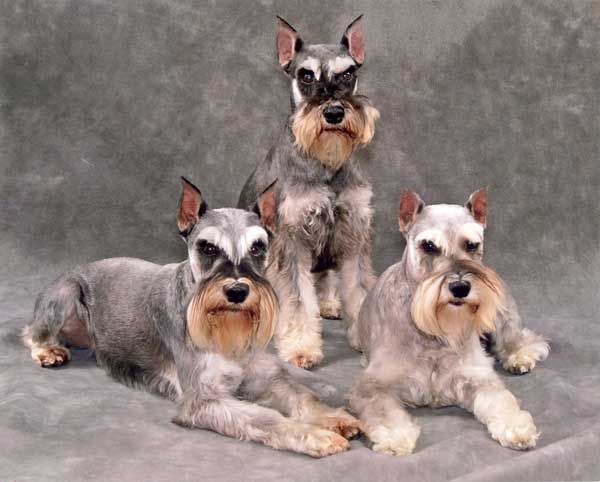
Good with children--very reliable. If properly trained, the Schnauzer makes a fine pet. The coat needs a good brushing once a week and clipping or stripping 4-6 times a year. Pet dogs are generally clipped, but show dogs must be stripped. This breed is dominant with other dogs and should be socialized extensively both with other dogs and people as a young puppy. Needs a lot of exercise as a puppy to prevent restlessness.
Personality:
Very protective, bold and spirited. Calm, loyal and responsible. Intelligent. A dominant breed that needs an experienced trainer. Responds best to firm, consistent training with a positive attitude and plentiful rewards.
Behavior:
- Children: Best with well behaved, considerate children.
- Friendliness: Reserved with strangers.
- Trainability: Easy to train.
- Independence: Fairly independent.
- Dominance: High.
- Other Pets: Generally good with other pets.
- Combativeness: Can be dog-aggressive.
- Noise: Average barker.
Grooming and Physical Needs:
- Grooming: Daily grooming is best.
- Trimming & Stripping: Professional trimming or stripping needed.
- Coat: Wiry coat.
- Shedding: Very light.
- Docking: The ears may or may not be cropped, and the tail is customarily docked.
- Exercise: Vigorous daily exercise needed.
- Jogging: An excellent jogging companion.
- Indoors: Fairly active indoors.
- Outdoor Space: Best with a yard.
- Climate: Does well in most climates.
- Owner: Not recommended for novice owners.
- Longevity: Moderately long lived (12 to 15 years).












